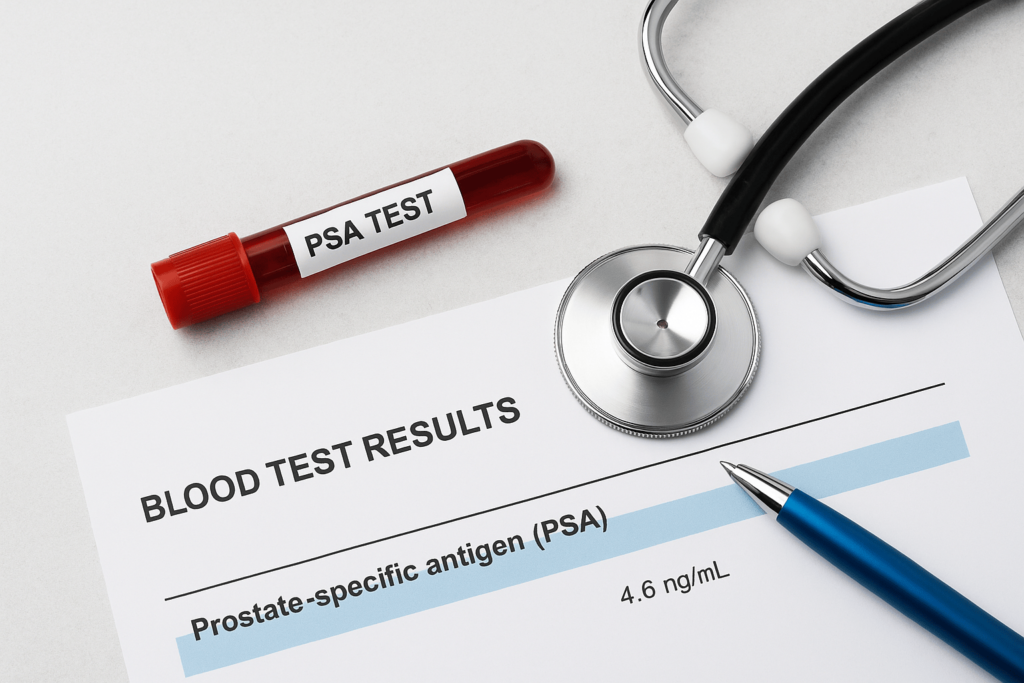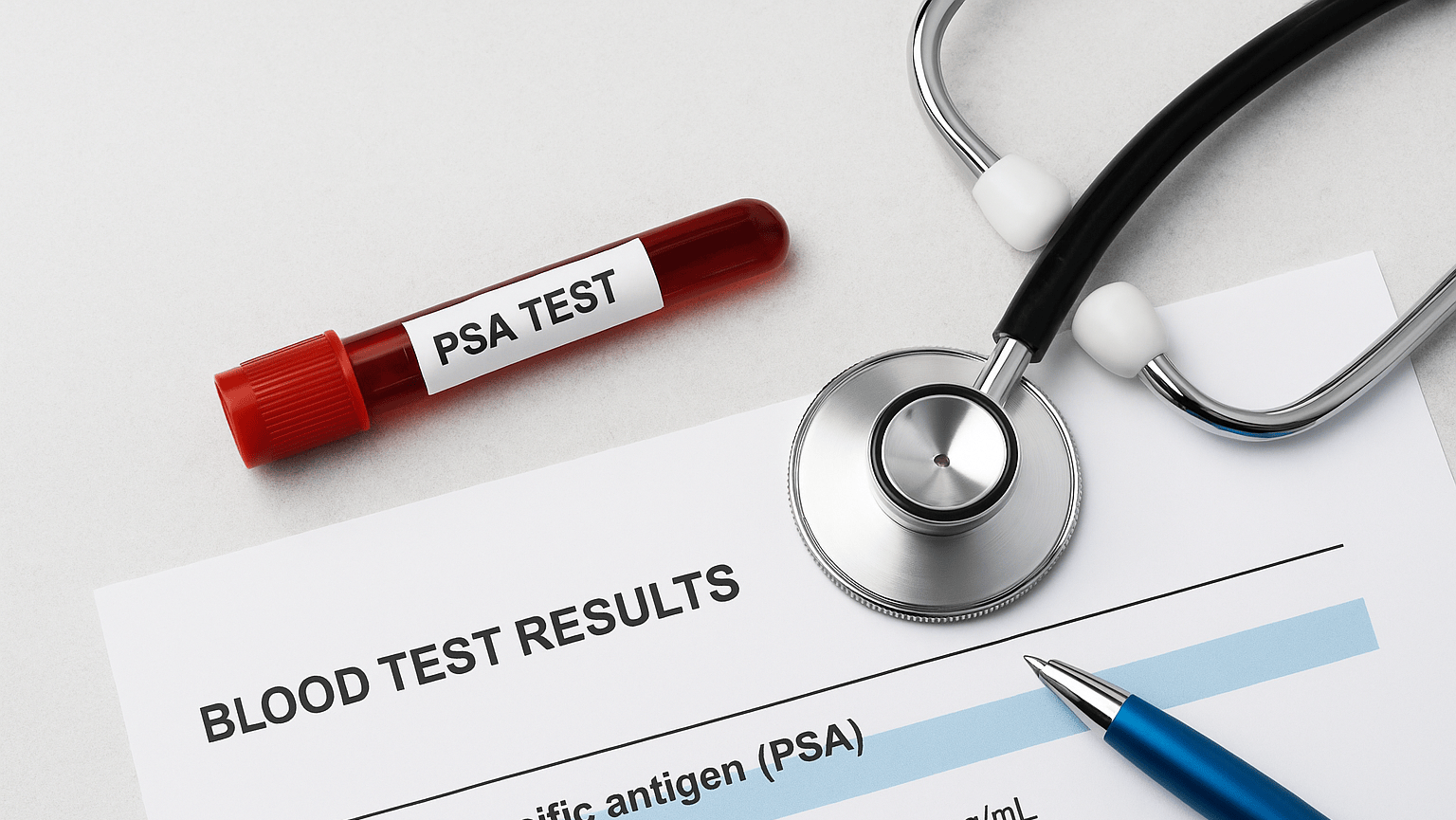Prostate-specific antigen (PSA) testing remains one of the most common tools used in the United States to screen for prostate health conditions, including prostate cancer. However, interpreting PSA test results is not always straightforward, especially in older adults. For men aged 70 and above, understanding PSA levels in older men is essential in determining what constitutes a normal result versus what may warrant further investigation. This article explores the current guidelines, with a focus on age-adjusted values, clinical decision-making, and the evolving role of PSA screening in senior men.

What is PSA and Why It Matters: Prostate-specific antigen is a protein produced by both normal and malignant cells in the prostate gland. PSA circulates in the blood and can be measured through a simple blood test. Elevated PSA levels can indicate a range of prostate-related conditions, including:
- Benign prostatic hyperplasia (BPH)
- Prostatitis (inflammation of the prostate)
- Prostate cancer
Because PSA levels can be influenced by multiple factors, they are not a definitive diagnostic tool for cancer on their own. Instead, they serve as a preliminary screening method that may prompt further evaluation depending on the individual’s risk profile and test results.
Age-Adjusted PSA Guidelines: What Is a Normal PSA Reading at Age 70?
The interpretation of PSA values is age-dependent. As men age, it is common for PSA levels to rise, even in the absence of cancer. This has led to the establishment of age-adjusted reference ranges to more accurately assess risk.
For men in their 70s, the average PSA range for senior men is generally considered to be up to 6.5 ng/mL. This figure is supported by various clinical studies and population-based screening programs in the USA. Key Points:
- A PSA level below 6.5 ng/mL in a 70-year-old man is typically regarded as within the normal PSA levels in elderly men.
- Trends over time—known as PSA velocity—are important. A gradual rise may be less concerning than a sudden spike.
- PSA density (PSA level relative to prostate size) and free-to-total PSA ratios may be used in conjunction with absolute PSA values for better risk assessment.
Factors Influencing PSA Levels in Older Men: Several physiological and external factors can affect PSA levels, especially in older populations. Recognizing these influences is critical for avoiding misinterpretation and unnecessary procedures. Common Influencing Factors:
- Benign prostatic hyperplasia (BPH): A common age-related enlargement of the prostate that can increase PSA levels.
- Recent ejaculation or physical activity: Sexual activity or prolonged cycling may cause temporary PSA elevation.
- Prostatitis or urinary tract infection: These conditions can raise PSA levels without indicating malignancy.
- Medical procedures: Recent catheterization or prostate biopsy can influence results.
Clinical Use Cases and Decision-Making Trends: In recent years, healthcare professionals in the United States have moved toward more individualized decision-making when evaluating PSA test results, particularly for men over the age of 70. The U.S. Preventive Services Task Force (USPSTF) and American Urological Association (AUA) emphasize shared decision-making that considers a man’s overall health, life expectancy, and personal preferences. Evolving Practices:
- Routine PSA screening is not universally recommended for men over 70 unless they are in excellent health and have a life expectancy exceeding 10 years.
- For men with no symptoms and stable PSA levels, ongoing surveillance may be preferred over immediate invasive diagnostics.
- Repeat testing may be spaced out to monitor long-term trends rather than relying on one-off results.
This reflects a broader trend toward minimizing overdiagnosis and overtreatment while maintaining vigilance in high-risk cases.
Diagnostic Tools Beyond PSA: When PSA results are inconclusive or elevated, additional diagnostic tools may be considered to provide further clarity. These tools are increasingly used to differentiate between benign and malignant conditions, especially in older adults where risk of overtreatment is higher. Common Follow-up Tests:
- Digital Rectal Exam (DRE): Physical examination of the prostate to detect abnormalities.
- Multiparametric MRI (mpMRI): Imaging to visualize suspicious areas in the prostate.
- Prostate biopsy: Invasive sampling of prostate tissue, typically guided by imaging.
- PSA derivatives: Includes free PSA percentage, PSA density, and PSA velocity.
These modern approaches improve diagnostic accuracy and reduce unnecessary procedures for elderly men with borderline PSA results.
Population Trends and Screening Outcomes: Population-wide studies have shown that the incidence of elevated PSA levels increases with age, but the correlation with clinically significant prostate cancer declines in men over 70. Many prostate cancers detected in this age group are low-grade and slow-growing, posing minimal threat during a man’s remaining lifespan. As a result, healthcare providers increasingly focus on:
- Quality of life
- Avoidance of unnecessary treatments
- Patient-centered care planning
This shift aligns with findings that aggressive intervention for low-risk prostate cancers in elderly men may not significantly improve overall survival but can lead to unwanted side effects.
Conclusion: For men aged 70 and older, understanding PSA levels in older men is essential for informed and balanced health decisions. The normal PSA levels in elderly men typically extend up to 6.5 ng/mL, but interpretation must also consider trends over time, individual health status, and risk factors.
While PSA testing remains a valuable screening tool, it is most effective when used within a modern, patient-centered care framework that avoids unnecessary intervention and prioritizes personalized monitoring. Men in this age group are encouraged to consult with their healthcare provider to interpret PSA test results for 70 year olds in context and determine whether follow-up testing or observation is the most appropriate course of action.
